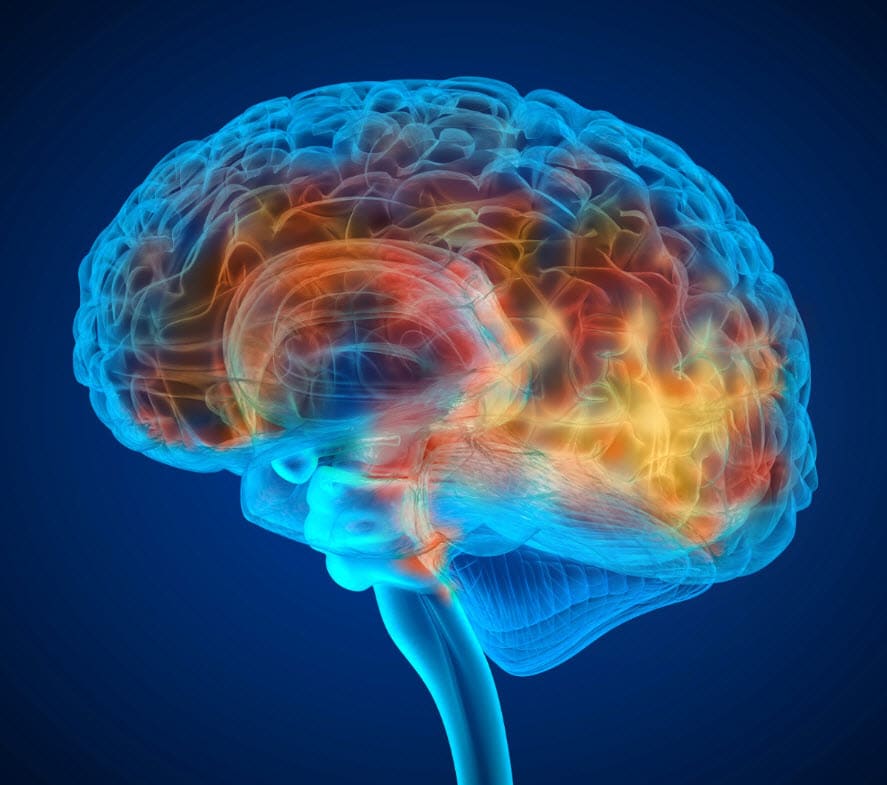
The following article by Dr. Mark Gold, recently published on the Addiction Policy Forum Blog, explores the growing body of research about what regions of the brain are changed during a person’s spiritual practice. It presents compelling ideas for how fellowship and treatment programs can empower individuals in recovery to use spirituality as a proven tool to improve their mental health.
Spirituality can be an important component of recovery from addiction, as it can be a key way for a person seeking recovery to connect to something outside themselves – spiritual practices have long been cornerstones of mutual aid groups, such as Alcoholics Anonymous. Recently, researchers and those looking at trends have concluded that Americans are becoming less religious but at the same time identify as more spiritual. Spiritual engagement can be a way to find, as the authors in the study write, a “sense of union with something larger than oneself.” In a recent study of the brain done at Yale directed by Dr. Mark Potenza, Neural Correlates of Spiritual Experiences, scientists used functional Magnetic Resonance Imaging (fMRI) to examine exactly how spirituality activated or deactivated, certain regions of the brain, changing how people perceive and interact with the world around them.
Dr. Christina Puchalski, Director of the George Washington Institute for Spirituality and Health, defines spirituality as “the aspect of humanity that refers to the way individuals seek and express meaning and purpose and the way they experience their connectedness to the moment, to self, to others, to nature, and to the significant or sacred.” Importantly, the authors of the study encouraged diverse, personally-motivated definitions of spiritual experience, examples of which included participation in a religious service at a house of worship, connection with nature, mindfulness meditation, and contemplative prayer.
How do we Measure the Effect of Spirituality?
Spirituality and religious practices are a key part of many people’s lives – 81% of U.S. adults describe themselves as spiritual, religious, or both. Despite the majority of American adults engaging in some form of spiritual practice, little is known about what happens in certain parts of the brain during these spiritual experiences. Although studies have linked specific brain measures to aspects of spirituality, none have sought to directly examine spiritual experiences, particularly when using a broader, modern definition of spirituality that may be independent of religiousness. This study used a special kind of brain imaging, functional magnetic resonance imaging (fMRI), to examine neural structures and systems that are activated when we engage in spiritual practice. By detecting changes in blood flow to certain regions of the brain, the fMRI is able to detect activity in the brain when participants were asked to recall spiritual experiences.
Methodology
A potential challenge in this study is the wide variety of spiritual experiences that individuals can find personally meaningful. The authors of the study sought to address this by using a personalized guided-imagery fMRI procedure in which participants were asked to describe a situation in which they felt “a strong connection with a higher power or a spiritual presence.” Their accounts were turned into a script, which was recorded and played back to the participant during fMRI. The brain activation measured during the participant’s recall of a spiritual moment was compared to measurements taken while participants listened to narrations of their neutral and stressful experiences.
Key to this study was that the accounts were completely self-directed by the participants — which enabled the researchers to identify commonalities in brain activity among diverse spiritual experiences.
How Does Spirituality Change the Brain?

The area highlighted in blue is the Inferior Parietal Lobe, which is associated with perceptual processing
Spiritual experiences were associated with lower levels of activity in certain parts of the brain:
- The inferior parietal lobe (IPL), the part of the brain associated with perceptual processing, relating to the concept of self in time and space
- The thalamus and striatum, the parts of the brain associated with emotional and sensory processing
This study furthers a growing body of research about spirituality and its connection to brain processing. These findings tell us that spiritual experiences shift perception, and can moderate the effects of stress on mental health. This study saw decreased activation in the parts of the brain responsible for stress and increased activity in the parts of the brain responsible for connection with others. A sense of union with someone or something outside of oneself and community engagement have been found to support a robust recovery from substance use disorders as well as other behavioral health issues.
Looking to the Future
Marc Potenza, MD, PhD is an expert in Psychiatry, Behavioral Addictions, and his work at Yale in this important area is a welcome addition to the investigators working in this field. Neural Correlates of Spiritual Experiences has positive implications for instituting spiritual engagement in prevention, treatment, and recovery for substance use disorders. Importantly, participants were scanned while they recalled their own, individualized spiritual experience, but the results were consistent between participants. This means that a person does not have to participate in a certain type of spiritual practice to see the benefits, but can engage in whatever version of engagement is most compatible with their personal beliefs. This encourages treatment and recovery programs to encourage patients to pursue diverse means of spiritual engagement.
This study found a way to measure and visualize what many recovery and treatment communities have understood for years—that spirituality can reduce stress and create feelings of connectedness. By understanding what regions of the brain are changed during a person’s spiritual practice, fellowship and treatment programs can empower individuals in recovery to use spirituality as a proven tool to improve their mental health.
References:
- Smith, G., Van Capellen, P., (2018, March 7) Rising Spirituality in America [Audio Podcast]. Retrieved from https://www.pewtrusts.org/en/research-and-analysis/articles/2018/rising-spirituality-in-america.
- Lipka, M., Gecewicz, C., (2017, September 6). More Americans now say they’re spiritual but not religious. Retrieved from https://www.pewresearch.org/fact-tank/2017/09/06/more-americans-now-say-theyre-spiritual-but-not-religious/
